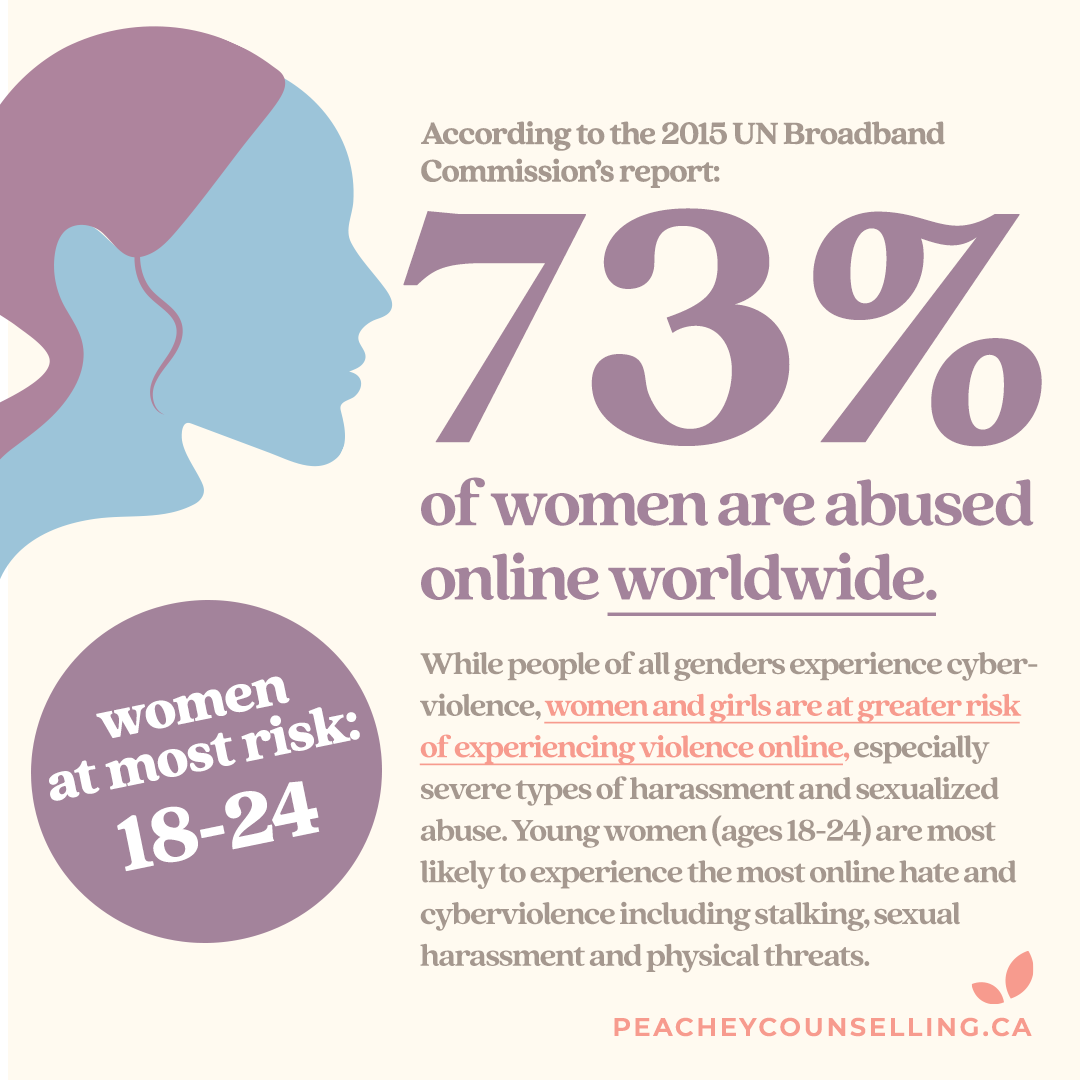Online Hate and Cyberviolence Against Women
Women Abuse Prevention
Online hate and cyberviolence have emerged as extensions of violence against women.
November is Women Abuse Prevention Month in Ontario and as part of our initiative to bring you helpful information, resources and guidance, we are highlighting the rise in online hate and cyberviolence against women and girls, provided by the Canadian Women’s Foundation.
WHAT ARE THE DIFFERENCES BETWEEN:
Online hate
Canada’s Criminal Code designates four specific acts as hate crimes: “advocating genocide, inciting public hatred, promotion of hatred, and acts motivated by hate that target property used by an identifiable group.”
Cyberviolence
The United Nations uses the term to capture how the Internet can be used to “exacerbate, magnify or broadcast the abuse” against women and girls. Cyberviolence can include online harassment, as well as threats of physical harm such as sexual assaults, murders and suicides.
Cyberbullying
Cyberbullying is often associated with children and youth being harassed through technology - being continuously humiliated online through social media platforms or texts.
EXAMPLES OF ONLINE HATE AND CYBERVIOLENCE:
Harassment or spamming
Using technology to continually contact, annoy, threaten and/or scare.
Cyberstalking
Repeated and unwanted emails, texts, or social media messages and can include posting inappropriate or personal information or pictures.
Sexual exploitation or luring
Women and girls are “coerced into removing clothing and posing sexually for a webcam or are solicited for sex as a minor.”
Non-consensual distribution of images
This refers to ‘revenge porn’ and non-consensual sexting and occurs when individuals post intimate photos or videos of another person online to humiliate or negatively impact their life; and when someone texts intimate photos or messages without permission.
Hacking
Gaining illegal access to an individual’s or organization’s online services for reasons such as to acquire or alter personal information, slander, or create harm.
Doxing
After acquiring someone’s personal information, this refers to releasing the information online to harass them.
Flaming
Messages known as ‘flames’ are posted on online discussion forums to offend other forum member(s) and incite a ‘flame war’. These messages often contain offensive, abusive, and / or discriminatory language.
According to a 2012 national survey of anti-violence support workers in Canada, 98% of perpetrators used technology to intimidate or threaten their victims.
WHY CYBERVIOLENCE CAN’T JUST BE ‘TURNED OFF’
Cyberviolence can have more devastating psychological impacts on victims than face-to-face interactions. It can have a global reach and can take place anytime - it’s difficult to escape or to stop. People who experience cyberviolence may be re-victimized every time a hateful message or sexual image is shared or viewed without their permission.
Abusive partners and stalkers have started using digital surveillance technology to control and monitor their victims’ lives. Monitoring apps intended for the purposes of locating a friend, or a child can be used to monitor women and girls. These apps, known as spyware, give abusers unlimited access to their victims’ online activities and physical whereabouts without their knowledge.
We can’t ignore hate and cyberviolence.
Reducing online hate is essential to ending gender-based violence overall. Exposure to hateful attitudes that promote an inferior social, political and economic position for women influence violence against women. It escalates the risk that consumers of such content will adopt similar attitudes and act on them.
Hatred towards women increases physical acts of violence against women, just as inciting racial hate leads to an increase in racially-motivated violence. The intersection of these factors makes it especially dangerous for Indigenous women, Black women, women of colour, and identifiably Muslim women or women presumed to be Muslim.
If you or someone you know is experiencing an abusive relationship, you must remember that safety is key, and that abuse is NEVER acceptable or justified, in any situation.
If you or someone you know is in immediate danger, call 911, or you local emergency services (police, fire, ambulance).
Whatever it is, we’re here for you.
Life is uncertain. Jobs are stressful. Parenting is hard. Relationships take work. Families can be dysfunctional. And, sometimes love hurts. When you’re confronted by feelings, events, or issues that are making your life challenging, it’s okay to ask for some help.



